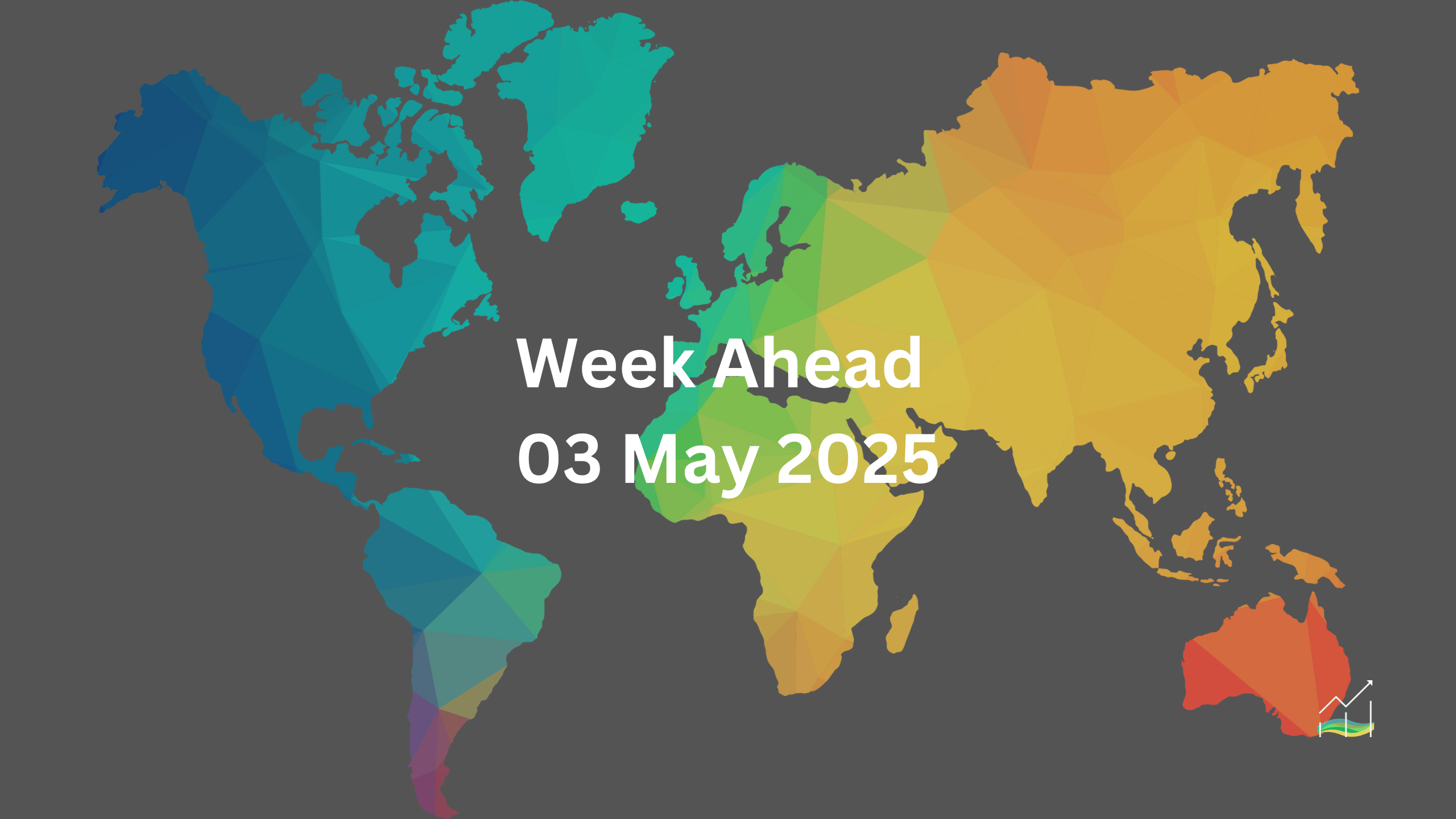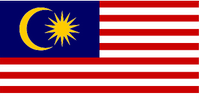03/05/2025 Week Ahead

Dollar Correction Continues, Mixed Macro Signals
Key Takeaways:
- Conflicting signals emerge from U.S.-China trade relations.
- U.S. economy contracts in Q1; Treasury Secretary blames effective embargo on China.
- Fed unlikely to pivot as labor market holds strong.
- Dollar recovery uncertain but signs point to continued upside.
- BoE expected to cut rates by 25bps at upcoming meeting.
Geopolitical and economic crosscurrents defined the week, with conflicting reports on U.S.-China trade talks stirring confusion in the markets. While former President Trump claimed that discussions were ongoing, Beijing flatly denied any such negotiations. Meanwhile, the U.S. economy reported a slight contraction in Q1, shrinking at an annualized rate of 0.3%. U.S. Treasury Secretary Bessent blamed the economic downturn on an “effective embargo” that he claimed was crippling China's economy. Yet by week’s end, China's Commerce Ministry acknowledged it was reviewing U.S. overtures, hinting that Washington may be softening its stance.
Despite calls from Trump and Bessent for rate cuts, the Federal Reserve appears unmoved. The latest employment data showed enough strength to maintain the current policy stance, leaving little incentive for the Fed to shift dovish in the near term. Market expectations for the next rate cut have now been deferred to Q3 instead of Q2.
Currency markets reacted sharply mid-week, with Thursday’s price action hinting that the U.S. dollar may have found a near-term bottom. However, the lack of momentum following the employment report cast doubt on that recovery. Still, with U.S. yields rising, labor data remaining resilient, and technical indicators aligned, the dollar’s corrective rebound looks set to extend further.
Across the Atlantic, uncertainty seems less tolerated. The Bank of England is widely expected to deliver a 25 basis point cut at its upcoming meeting, aligning with market pricing and policy expectations.
United States of America
Overview
Trade policy uncertainty continues to dominate U.S. macroeconomic conditions, as political messaging from the White House remains erratic. Former President Trump's negotiation style, marked by strategic shifts rather than clear retreats, adds to market confusion. Beijing’s guarded openness to possible trade discussions is widely viewed as a strategic move, signaling that the U.S. may have softened its stance. This climate of uncertainty has left many businesses hesitant, delaying capital expenditure and key strategic decisions.
With Q1 GDP now behind us — and widely seen as distorted — investor focus shifts to Q2 data. The April jobs report showed a solid 177k increase in nonfarm payrolls, outpacing expectations, although prior months were revised downward. Still, the overall picture suggests the U.S. economy remains in what Fed Chair Powell has described as a “good place.” This has led markets to significantly reduce the odds of a June rate cut, which now stand at 40%, down from 70% the week prior.
The upcoming ISM services report may reveal further cracks, particularly after a weak preliminary services PMI reading. Yet, both the Fed and Treasury Secretary Bessent appear dismissive of survey-based soft data. Attention now turns to the FOMC meeting concluding May 7. While no rate cut is expected, market participants will be closely watching the tone of the forward guidance — if any is given, given the murky macro backdrop.
On the trade front, tariffs between the U.S. and China have escalated into what is effectively a mutual embargo. Key sectors such as agriculture and energy have shifted away from bilateral dependence, with alternative suppliers like Brazil and Canada filling the gap. The broader trade fallout is now visible in logistics data, with west coast container traffic declining. Meanwhile, the U.S. dollar showed signs of a technical rebound, although Friday’s pullback following a strong jobs report complicates the outlook. The Dollar Index ended just above the key 100.00 threshold.
Economic Drivers
- Conflicting U.S.-China trade messages introduce macroeconomic uncertainty.
- Businesses delay capex and strategic plans due to lack of policy clarity.
- April jobs report exceeded expectations despite prior-month downward revisions.
- Fed officials continue to characterize the U.S. economy as stable.
- Survey data is weakening but largely downplayed by policymakers.
- Market odds for a June rate cut drop significantly as Q2 begins.
- Agricultural and energy exports shift to other partners amid China embargo.
Data and Events
- May 6, 2025: ISM Services PMI (April).
- May 7, 2025: FOMC Meeting Decision & Statement.
Price Action
- Dollar Index closed above 100.00, suggesting an ongoing corrective rebound.
- Technical tone weakens if 98.85 is broken to the downside.
- Momentum indicators favor short-term dollar strength.
- Weekend pullback despite solid jobs data raises near-term volatility risk.
Key Points:
- Trade rhetoric is destabilizing, with markets interpreting policy shifts as strategic retreats.
- Labor data supports the Fed's hold stance, but survey data hints at fragility.
- Market repricing pushes next rate cut expectation from June to Q3.
- Dollar’s corrective rally remains in place but lacks strong follow-through.
- FOMC guidance will be the focal point amid rising uncertainty.
Australia
Overview
Australia is approaching a key political milestone, with Prime Minister Albanese expected to secure a second term for the Labor government. This outcome has largely been priced in by markets and is unlikely to drive immediate volatility. The economic landscape is softening, with moderating inflation and weaker activity reinforcing expectations that the Reserve Bank of Australia will accelerate its easing cycle.
Geopolitically, Australia remains aligned with the United States through a longstanding free-trade agreement and strategic alliances such as the Five Eyes intelligence network and the trilateral AUKUS pact. However, it continues to face pressure as Washington pushes countries to align more definitively against China. The renewed optimism around possible U.S.-China trade talks, along with broad dollar weakness, helped boost the Australian dollar into the weekend.
Consumer spending is now in focus, with March data set to shed light on household activity following a strong Q4 2024 performance. Although momentum may have slowed in Q1 2025, underlying demand remains resilient. This could influence the RBA’s decision later this month, where markets are debating whether a 25 basis point cut will be followed by a larger move. The likelihood is that the central bank opts for a more measured approach, especially if inflation remains sticky.
Economic Drivers
- Labor expected to win a second term under Prime Minister Albanese, with little market impact.
- Economic activity is weakening and inflation is moderating.
- RBA likely to accelerate rate cuts, but scale remains uncertain.
- Australia remains deeply integrated with U.S. trade and security structures.
- Strategic pressure grows amid U.S. efforts to counter China’s influence.
- Hopes of renewed U.S.-China trade talks support sentiment.
Data and Events
- May 6, 2025: March Household Spending.
Price Action
- Australian dollar rebounded from midweek lows near $0.6355 to five-month highs around $0.6470.
- Closed the week near $0.6435, above the 200-day moving average (~$0.6460).
- Key resistance levels include $0.6500 and $0.6550 (61.8% retracement from October high).
- A break below $0.6350 would increase risk of downside correction.
Key Points:
- RBA expected to cut rates this month, but a 25 bp move is more likely than a 50 bp cut.
- Political stability under Labor offers continuity, but macro conditions remain fragile.
- Household spending remains firm, supporting cautious optimism on consumption.
- Aussie dollar shows technical strength, but faces resistance in the $0.6500–$0.6550 range.
Canada
Overview
Canada enters a new political phase under Prime Minister Mark Carney, who brings credibility and international recognition to the role. His leadership is expected to push Canada toward a more independent economic stance, with a clear shift in focus from the United States toward stronger ties with Europe. This pivot is subtly supported by China, which is increasing its purchases of Canadian oil as it reduces energy imports from the U.S., adding a strategic layer to the evolving global alliances.
The upcoming week will see several key economic reports, though not all carry the same weight. The March trade figures, while still important, are backward-looking and may be distorted by pre-emptive U.S. inventory accumulation ahead of new tariffs. Of greater interest is the April IVEY PMI, which may reflect business uncertainty in response to cross-border tensions. Additionally, the recent consumer boycott of U.S. brands and a steep drop in forward bookings from American tourists are likely to reinforce domestic demand trends.
However, the main focus is the April employment report due at week’s end. Canada’s labor market has been under pressure, with job creation in Q1 2025 averaging just under 15,000 per month—half the pace of the same period last year. Most concerning is the loss of 82,000 full-time jobs in February and March, the sharpest drop since the early pandemic. Overall, more full-time positions were lost in Q1 2025 than were gained in Q1 2024. While the market has recently reduced expectations for a June rate cut, inflation and financial conditions remain key variables that could shift the Bank of Canada’s stance.
Economic Drivers
- Mark Carney's leadership expected to reposition Canada’s external economic strategy.
- Stronger alignment with Europe expected, reducing reliance on U.S. trade.
- China increases oil purchases from Canada as part of broader geopolitical realignment.
- Domestic sentiment boosted by consumer backlash against U.S. brands.
- U.S. tourist activity sharply down, likely aiding domestic spending resilience.
- Employment conditions deteriorating, especially in full-time positions.
- Market confidence in near-term rate cuts has diminished, but inflation trends remain decisive.
Data and Events
- May 7, 2025: March Trade Balance.
- May 7, 2025: April IVEY PMI.
- May 10, 2025: April Employment Report.
Price Action
- USD/CAD has been consolidating in the 1.3800–1.3900 range for weeks.
- Support broke with a low near 1.3765, the weakest since October.
- Closed the week above 1.3800, keeping a rebound scenario alive.
- Break above 1.3860 could trigger a move toward the 1.4000 level.
Key Points:
- Canada’s political shift under Carney signals reduced U.S. dependence.
- China’s strategic oil purchases reinforce Canada's trade diversification.
- Domestic demand may hold up amid reduced U.S. tourism and brand consumption.
- Employment data will be the key focus, given recent full-time job losses.
- USD/CAD range break invites volatility, but rebound risks remain.
China
Overview
Beijing has chosen a measured strategy in response to rising U.S. tariffs, maintaining relative stability in the yuan against the U.S. dollar. This is a deliberate move, aimed not at short-term tactical advantage but at denying the U.S. a competitive edge through currency depreciation. While the yuan has remained steady against the dollar, it has weakened against most other currencies. This positioning allows China to navigate trade tensions while keeping broader currency dynamics favorable.
The key question now is how China will address the decline in U.S. demand and the shift in global supply chains. While some production has been moved to other countries, China is expected to respond by increasing domestic demand and diversifying its export markets. Relying more on domestic consumption would help reduce international backlash, whereas redirecting exports to third-party markets may invite further scrutiny.
This week’s trade data will be closely monitored for signs of tariff-related disruption. March exports may have been artificially high due to frontloading ahead of the tariff escalation. At the same time, China has been actively reducing its economic exposure to the U.S. by canceling major purchases—including Boeing aircraft—and replacing U.S. energy and agricultural imports with alternatives from other countries. While this shift won’t necessarily boost total import volumes, it strengthens China’s strategic trade relationships.
Domestic financial activity remains robust. Aggregate lending in Q1 2025 rose more than 18.5% compared to the same period last year. Lending in April 2024, however, saw an unusual slowdown, which may signal cautious credit conditions. Meanwhile, the IMF has downgraded China’s 2025 growth forecast to 4.0% from 4.5%, reflecting concerns over global headwinds and internal structural adjustments.
Economic Drivers
- China maintains currency stability to strategically counter U.S. tariffs.
- Yuan depreciation against other currencies enhances external competitiveness.
- Shift away from U.S. imports, including energy, grains, meat, and aerospace products.
- Growing reliance on domestic demand to offset lost U.S. and outsourced production.
- Strengthening ties with alternative trade partners to mitigate geopolitical pressure.
- Q1 2025 lending growth was strong, suggesting ongoing policy support.
- IMF downgrades 2025 growth forecast to 4.0%, citing global and domestic challenges.
Data and Events
- May 7, 2025: April Trade Balance.
Price Action
- Offshore yuan strengthened sharply, with USD/CNH briefly falling below 7.21.
- Pair settled near the 200-day moving average around 7.2225.
- Onshore yuan closed pre-holiday near 7.2715, suggesting volatility upon reopening.
- Broad dollar weakness was the main driver behind recent CNH gains.
Key Points:
- China avoids devaluation, instead allowing selective yuan weakness via cross-currency dynamics.
- Export diversification and import substitution drive strategic realignment.
- Trade data will clarify how tariffs are impacting external performance.
- Strong Q1 lending supports the domestic economy amid external strain.
- Yuan volatility may rise as markets reopen following the holiday.
Europe
Overview
The euro has been a key beneficiary of the U.S. dollar’s recent weakness, gaining momentum as traders unwind dollar positions and increase hedging against further U.S. volatility. While the single currency’s strength reflects short-term positioning, it also signals market skepticism toward U.S. trade threats. The euro’s rally—roughly 14% from its February lows—has been substantial, though it left momentum indicators stretched. The initial trigger for correction came with Trump's rhetorical shift on Federal Reserve policy and growing belief that much of the tariff rhetoric may be strategic posturing.
Nonetheless, Europe cannot afford complacency. Despite assumptions of U.S. bluffing, the risk of across-the-board 10% tariffs remains on the table, along with more targeted measures. In response, the European Union is expected to unveil its initial trade countermeasures this week, which may shape the next phase of cross-Atlantic negotiations.
From an economic perspective, recent data has taken a back seat following last week's Q1 GDP release. The upcoming March PPI and retail sales reports are unlikely to change the outlook. However, attention will shift to Germany’s March factory orders and industrial output figures. Manufacturing in Europe’s largest economy has shown tentative signs of stabilisation, with the PMI climbing to 48.3 in March—the highest since August 2022—before softening again in April.
Economic Drivers
- Euro strength driven by dollar weakness and position unwinding.
- Markets interpret U.S. tariff threats as largely strategic and not yet material.
- Europe still must prepare for potential 10% blanket U.S. tariffs plus sector-specific measures.
- EU expected to present its initial trade proposals in response this week.
- German manufacturing showed signs of recovery in March, but momentum faltered in April.
Data and Events
- May 6, 2025: Germany March Factory Orders.
- May 7, 2025: Germany March Industrial Production.
- May 7, 2025: Eurozone March Retail Sales.
- May 8, 2025: Eurozone March PPI.
Price Action
- Euro rose from $1.0140 (Feb low) to $1.1575 (Apr 21 peak), a 14% gain.
- Buyers stepped in near $1.1265 last Thursday, halting a brief correction.
- Strong U.S. jobs data failed to reverse gains; euro touched $1.1380.
- Resistance lies in the $1.1400–1.1425 area.
- Break below $1.1260 would reopen downside correction risk of 200 pips.
Key Points:
- Euro remains supported by macro positioning and skepticism over U.S. policy threats.
- EU preparing to respond to potential U.S. tariffs, adding policy risk.
- German factory data may offer insights into regional industrial momentum.
- Euro’s trend remains intact, but stretched technicals and political risk warrant caution.
Japan
Overview
The yen has been under pressure amid what appears to be the unwinding of structural short positions, particularly those tied to leveraged trades involving low-interest yen funding used to acquire higher-yielding or more volatile assets abroad. This shift is disrupting traditional correlations. The 30-day correlation between USD/JPY and the U.S. 10-year Treasury yield, which hovered above 0.70 earlier this year, has now collapsed below 0.15—its lowest since early 2023. In contrast, the yen’s correlation with the Dollar Index has surged to nearly 0.88, among the highest levels seen in a decade.
Japan’s economic performance continues to reflect deep structural challenges. Real wages—adjusted for inflation—remain in negative territory year-over-year, limiting household consumption. Broader demographic and cultural factors, including an aging population and cautious spending behavior, reinforce this consumption drag. Some analysts view Japan as a stronger candidate than the U.S. for a stagflation scenario, especially in light of weakening growth expectations.
At its latest policy meeting, the Bank of Japan revised its economic projections downward. FY2025 GDP growth was cut from 1.1% to 0.5%, aligning with the IMF’s updated forecast of 0.6%. The central bank also lowered its core CPI forecast from 2.4% to 2.2%, suggesting persistent disinflationary tendencies despite ongoing monetary support.
Economic Drivers
- Unwinding of structural yen shorts linked to global leveraged positions.
- Declining correlation between USD/JPY and U.S. 10-year yields signals shifting drivers.
- Yen closely tracking the broader U.S. dollar trend via Dollar Index correlation.
- Real wage contraction limits consumption and reinforces stagflation risks.
- Demographic drag from aging population and cautious household behavior.
- BOJ and IMF downgrade FY2025 growth forecasts to near 0.5%-0.6%.
- Core CPI expectations lowered, highlighting persistent disinflation concerns.
Data and Events
- May 7, 2025: March Labor Earnings.
- May 10, 2025: March Household Spending.
Price Action
- USD/JPY appeared to form a bottoming pattern projecting toward 148.00.
- Dollar climbed to near 146.00 before falling to 143.75 after U.S. jobs report.
- Buyers stepped in, lifting USD/JPY back above 145.00 late in the U.S. session.
- Gains supported by rising U.S. yields and fading BOJ rate hike expectations.
Key Points:
- Yen movement increasingly tied to broad dollar dynamics rather than U.S. yields.
- Japan's economy faces structural consumption limits and demographic headwinds.
- BOJ growth and inflation forecasts downgraded amid weak domestic demand.
- Technical rebound in USD/JPY reflects both domestic and external rate drivers.
United Kingdom
Overview
Sterling's recent strength appears more attributable to broad U.S. dollar weakness than confidence in the UK’s economic fundamentals. The delay in reciprocal tariffs—originally aimed at both the EU and UK—has temporarily spared Britain the brunt of the impact, providing a near-term advantage over European competitors. This has helped support the pound despite subdued domestic momentum.
All eyes are now on the Bank of England meeting scheduled for May 8. Markets are fully pricing in a 25 basis point rate cut, which has been entirely discounted in the swaps curve. The central bank is also expected to update its economic projections, which are likely to confirm a softening growth outlook. GDP is forecast to decelerate to 0.8% in 2025 from 1.1% in the previous year, with moderate improvements anticipated in 2026 and 2027. Inflation is expected to rise to 3.5% this year before gradually returning to the 2% target by 2027.
Market pricing currently reflects a full 75 basis points of easing this year, with an 80% chance of a fourth quarter-point cut. This is a notable shift from just a few weeks ago, when fewer than two cuts were expected. The rate outlook, combined with external currency flows, will be critical in determining sterling’s next direction.
Economic Drivers
- Sterling supported primarily by U.S. dollar weakness rather than UK macro strength.
- UK temporarily benefits from delay in reciprocal tariffs affecting EU more heavily.
- BOE expected to deliver a 25 bp rate cut at upcoming meeting.
- Growth outlook softening: 0.8% GDP forecast for 2025, down from 1.1%.
- Inflation expected to rise to 3.5% in 2025, then gradually ease toward target.
- Market pricing implies three cuts fully expected and a strong chance of a fourth in 2025.
Data and Events
- May 8, 2025: Bank of England Monetary Policy Decision and Economic Forecasts.
Price Action
- Sterling reached a new three-year high near $1.3445 before pulling back.
- Support emerged in the $1.3260–65 range late in the week.
- A potential double top may have formed, pending confirmation.
- A break below $1.3235 would signal further downside risk of 200 pips.
- Lack of follow-through selling leaves trend direction uncertain heading into the BOE meeting.
Key Points:
- Sterling’s rally driven more by external dollar weakness than internal growth signals.
- BOE poised to begin rate-cutting cycle, with dovish expectations priced in.
- Inflation forecast shows a temporary rebound before returning to target.
- Price action signals possible top, but confirmation is needed below $1.3235.
© 2025 SKONE Enterprise (003319453-V). All rights reserved.
The content on this site is for informational purposes only and does not constitute financial advice.


